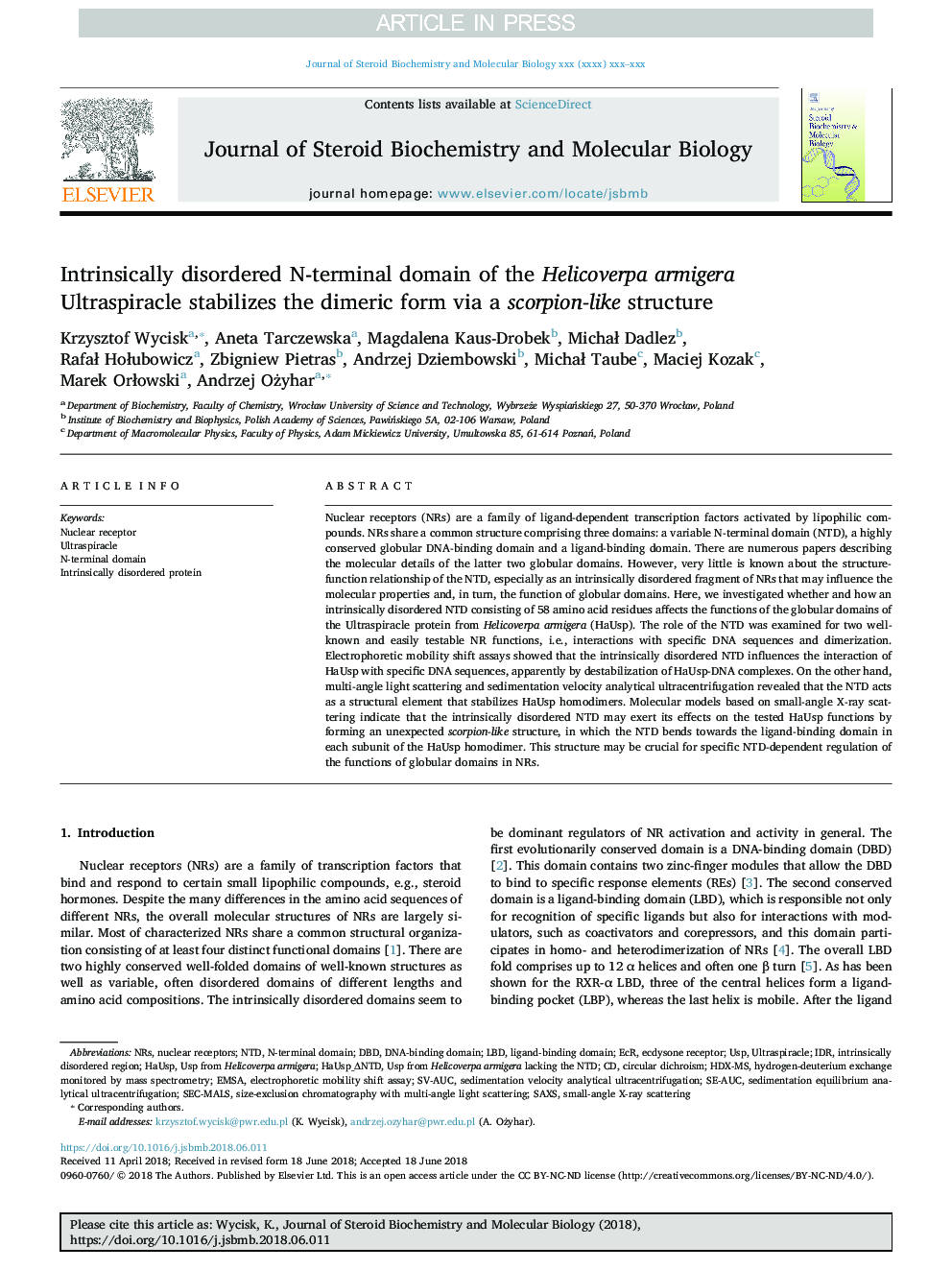| Article ID | Journal | Published Year | Pages | File Type |
|---|---|---|---|---|
| 8961916 | The Journal of Steroid Biochemistry and Molecular Biology | 2018 | 17 Pages |
Abstract
Nuclear receptors (NRs) are a family of ligand-dependent transcription factors activated by lipophilic compounds. NRs share a common structure comprising three domains: a variable N-terminal domain (NTD), a highly conserved globular DNA-binding domain and a ligand-binding domain. There are numerous papers describing the molecular details of the latter two globular domains. However, very little is known about the structure-function relationship of the NTD, especially as an intrinsically disordered fragment of NRs that may influence the molecular properties and, in turn, the function of globular domains. Here, we investigated whether and how an intrinsically disordered NTD consisting of 58 amino acid residues affects the functions of the globular domains of the Ultraspiracle protein from Helicoverpa armigera (HaUsp). The role of the NTD was examined for two well-known and easily testable NR functions, i.e., interactions with specific DNA sequences and dimerization. Electrophoretic mobility shift assays showed that the intrinsically disordered NTD influences the interaction of HaUsp with specific DNA sequences, apparently by destabilization of HaUsp-DNA complexes. On the other hand, multi-angle light scattering and sedimentation velocity analytical ultracentrifugation revealed that the NTD acts as a structural element that stabilizes HaUsp homodimers. Molecular models based on small-angle X-ray scattering indicate that the intrinsically disordered NTD may exert its effects on the tested HaUsp functions by forming an unexpected scorpion-like structure, in which the NTD bends towards the ligand-binding domain in each subunit of the HaUsp homodimer. This structure may be crucial for specific NTD-dependent regulation of the functions of globular domains in NRs.
Keywords
LBDEMSAsize-exclusion chromatography with multi-angle light scatteringSAXSSEC-MALSHauspUltraspiracleSV-AUCHDX-MSUSPIDRDBDNRSNTDECRElectrophoretic mobility shift assaysedimentation velocity analytical ultracentrifugationN-terminal domainDNA-Binding Domainligand-binding domaincircular dichroismintrinsically disordered regionSmall-angle X-ray scatteringIntrinsically disordered proteinEcdysone receptorNuclear receptornuclear receptors
Related Topics
Life Sciences
Biochemistry, Genetics and Molecular Biology
Biochemistry
Authors
Krzysztof Wycisk, Aneta Tarczewska, Magdalena Kaus-Drobek, MichaÅ Dadlez, RafaÅ HoÅubowicz, Zbigniew Pietras, Andrzej Dziembowski, MichaÅ Taube, Maciej Kozak, Marek OrÅowski, Andrzej Ożyhar,
